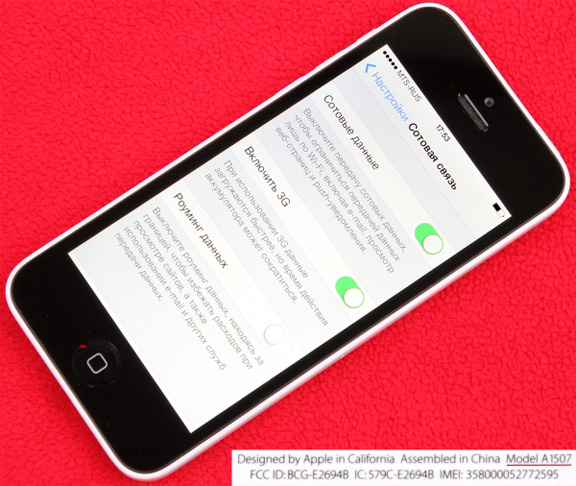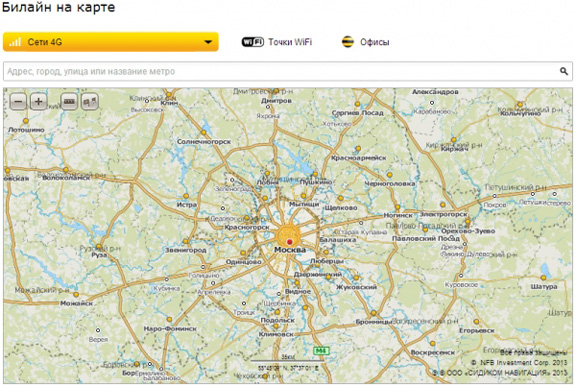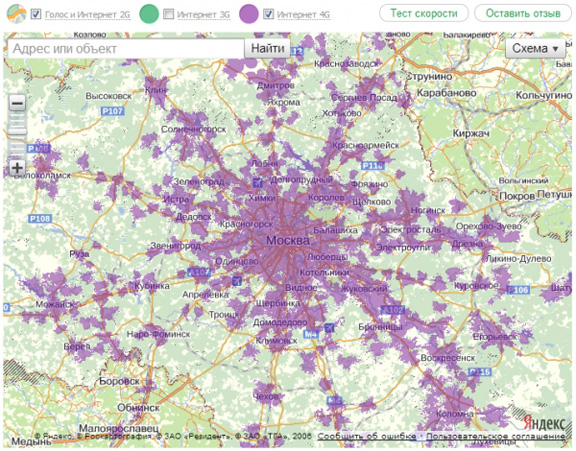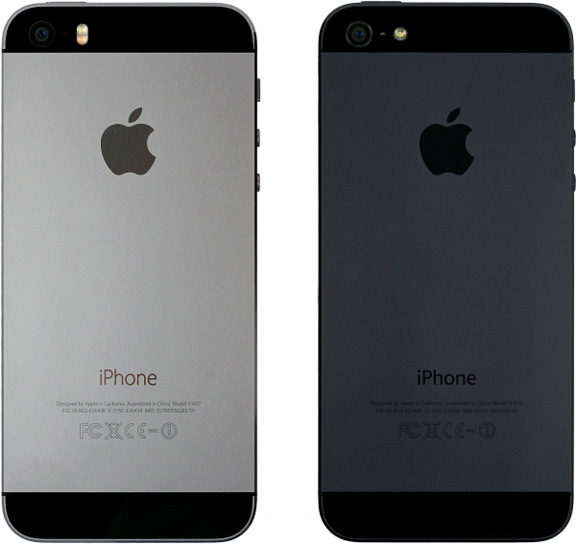Due to the rapid development of technology mobile communication many are wondering what is LTE in iPhone? To answer this question, you need to understand what LTE is. Why is it needed at all, and what advantages does it have.
LTE is a technology wirelesswhich belongs to the 4G standard. The main difference of the technology lies in the increased data transmission speed, as well as the improved communication quality. LTE theoretical speed is 300 Mbps for data download and 170 Mbps for uploading. However, due to the fact that the technology is still in the process of being finalized, and is also only being introduced on the network, the actual speed is 100 Mbps when downloading and 50 Mbps when uploading information.
In addition, LTE technology has a peculiarity that it uses the existing infrastructure for its implementation, which makes it possible to reduce the costs of networking. In addition, only LTE allows the transition from 3G to 4G networks smoothly and imperceptibly for subscribers. As a rule, all devices that are equipped with the LTE module are capable of operating in third and second generation networks. Thus, even if the subscriber leaves the LTE coverage area, the device automatically switches to 3G / 2G networks without losing connection.
1. So what is LTE in an iPhone
LTE technology opens up a lot of new opportunities for subscribers. In turn, operators are able to provide users with a wider range of services. The LTE module in the iPhone allows you to take full advantage of the technology. These include:
- High data transfer rate;
- High quality of communication;
- Lots of new features;
- Full HD video viewing in real time;
- Creation of video conferences with business partners;
- Reducing the cost of communication;
- Creation of a single global world lTE networks.
Thanks to these advantages, you can contact a person who is on another continent at any time to resolve various issues.
However, today, different countries use different frequency bands in which LTE networks are built. Because of this, smartphones that work in the United States cannot work in Russia. For example, modern iPhone models with LTE are equipped with LTE models capable of operating at 2100 MHz, while in Russia for LTE networks, frequency ranges are used in the range of 791-862 MHz and 2500-2700 MHz.
In this regard, the question arises: is it worth expecting that new models iPhone LTE will support Russian networks?
According to the company's management Apple new the iPhone 5 model will be universal and will be able to work in almost every country in the world, however, not all carriers. The company began production of three models of the new iPhone:
- GSM model A1428:
- GSM model A1429:
- CDMA model A1429.
2. LTE for MTS: Video
Everything is clear with the CDMA model, but Apple is creating a GSM model for the first time and the reason for this is the significant fragmented LTE technology. Because of this, the company had to develop two variants of the GSM iPhone. One model for the US and Canadian market and one for the rest of the world.
The result is as many as three iPhone options for the whole world. However, none of them support the frequencies of Russian operators. The GSM model A1429 is designed for a frequency of 2100 MHz, in which most operators in Europe operate. But as mentioned above, in Russia for the construction of LTE networks, other frequency ranges are allocated, which differ from those supported by the Apple mobile device.
But recently this problem has been resolved. A smartphone from Apple has entered the Russian market, which is capable of working in Russia, or rather in Russian LTE networks. The new iPhone 5C and iPhone 5S provide users with high-speed Internet access in Russia, opening up new opportunities for LTE mobile subscribers. These models are, of course, not cheap, and not available to everyone. But given the rapid development of technology, we can safely say that in the near future such devices will become more affordable.
In addition, in the Russian market mobile devices there are tons of smartphones from other manufacturers that allow you to take full advantage of LTE technology.
Apple has decided not to release one model of the iPhone 5s and iPhone 5c with support for all LTE versions, as some other manufacturers do. The reasons are quite clear - fewer chips make the phone's prime cost lower and its power consumption lower. Instead, the company produces several varieties of the same model. And although it follows from the specifications that some versions should work in Russian LTE networks, in practice, as experts have found out, this is not the case.
For those who missed everything or managed to forget it: in Russia, the 2600 MHz frequency range is relevant for LTE networks. To be precise, we are talking about LTE band 7 - this is LTE-FDD, the more popular version of the standard in the world - and band 38 - and this is a slightly exotic Chinese version, TDD-LTE. In band 7, the Iota / MegaFon and Beeline networks were initially built. MTS tried to follow a special Chinese path - but in the end it still switched to the development of the same band 7. As a result, that MTS 4G network works in this range, which we have been lucky to use for the second week.
At the same time, the previous generations of Apple mobile devices - both "retina" iPads and iPhone 5 - did not support either band 7 or band 38. There are many reasons for this, but in general they can be reduced to a rather short sentence: it was not possible to provide good "omnivorousness" existing hardware, and in the priority US market for Apple, fourth-generation networks operate in very, very different ranges. Since Russia is in the top list of Apple, occupies a place close to Nigeria and Pakistan, we could only wait and hope.
In principle, at the time of the release of the iPhone 5, this worried only the most seasoned mobile analysts. At that time in Russia, at the very least, there was only one LTE network - "Iota" / "MegaFon" - and even that, to put it briefly again, was not ready for full-fledged work.

Over the past year, everything has changed a little. To begin with, recently 3G networks in the Moscow region have begun to operate in much the same way as local roads. Thanks to the expensive operators who have blocked their networks with ultra-cheap subscribers, who enjoy using unlimited Internet for $ 5-7 a month (if you have American friends, tell them about local tariffs for mobile Internet and see what size their eyeballs will reach during the story).
At the same time, only the "select" have so far got into the LTE network: firstly, for access it was necessary to buy relatively expensive equipment, and secondly, the same MegaFon did not let everyone into 4G, but only rather expensive subscribers tariff plans... For advanced Muscovites, the LTE network has become something of a helicopter, if we continue the analogy with the Moscow transport realities: more expensive, but fast and without traffic jams.

Red highlighted versions of iPhone 5c with support for Russian LTE networks

Red highlighted versions of iPhone 5s with support for Russian LTE networks
Reason for joy - lists iPhone models 5s (left) and iPhone 5c, which include two versions each with support for our frequencies
Therefore, at the time of the announcement of the iPhone 5s and 5c, not only confused specialists were happy about the support of the LTE bands that are relevant to us. However, this joy turned out to be premature: the "gray" iPhones brought in in the first days of sales did not work in our networks.

And this is how it looks on the MTS network: there is not even a hint of LTE
The fact is that smartphone manufacturers practice software disconnection of LTE for those networks in which there may be problems with communication. They can be understood: even though the operator is to blame, the user will also swear at the manufacturer of the phone. And who should be so substituted? Yes, nobody. For example, Nokia did this in its time - it turned off the LTE support for Russia in its devices, and after a while turned it on.
In our review of the iPhone 5s, we wrote that something similar would happen to Apple. And it was predicted that LTE support could be enabled in new iPhones by the time official sales in Russia begin. However, this was probably an overly optimistic forecast. There is a suspicion that it will take a little longer to wait. Or not even a little.

In "MegaFon", it seems, they themselves do not really understand what is happening
There are several reasons for this. First, as mentioned above, Russia is a secondary market for Californians. Secondly, Yabloko has a reason to dislike Russian operators. Thirdly, and this is the most important thing, the LTE networks of our dearest "opsos" are still in a far from perfect condition. So it's not at all a fact that Apple will approve of them: the company is very sensitive to checking networks for compatibility - it obliges the company adhered to the principle "we do not do unnecessary functions, but everything that we have in mind should work perfectly."
I must say that the "Russian question" is not the first time that Apple has deprived the subscribers of one or another operator of access to the 4G network. In principle, by the time the iPhone 5 was released, there were not so many networks in the world in which LTE was implemented in such a way as to suit Apple. So many had to endure.

This first happened with the Swiss operator Swicsscom, which launched its LTE network in November last year - after the launch, iPhone 5 subscribers were surprised to find that 4G was not working in their smartphones. They had to wait two months for the happy ending of this story. Another example: subscribers of the American T-Mobile waited for "approvals" for about a month after the launch of this operator's LTE network.
At about the same time, the customers of the Norwegian operator Telenor were expecting the opening of LTE access in the "five". Basically, he developed the network in the very band 7, with which the fifth iPhone did not know how to work, but in one of the largest cities in Norway, the network worked on the supported band 3 - despite technical capability work, initially access was not open. O2 UK subscribers are suffering with us right now from the lack of 4G in the iPhone 5s and 5c. The network should be approved by Apple "within a few weeks." Similar stories happened with the Malaysian Maxis, not to mention the Tajik Babilon Mobile - the latter's network did not manage to get into the “white list”, despite the fact that it initially works on band 1 and band 3 supported by all iPhones and iPads.
However, in our case, there is one nuance that greatly complicates everything. The fact is that none of the existing fourth-generation mobile communication networks in Russia at the moment, by and large, is ready for normal operation. Consequently, it may turn out that it is not ready for Apple certification either. For example, Beeline deployed 4G only within the Garden Ring - it's not even joking to call it a network.

Beeline's LTE network coverage on the map looks like a spit into the soul of Russia
MegaFon has problems of a different kind: the network of this operator is more extensive, but its work is rather intricate. Despite the fact that the company has already acquired the Yota network, which it previously used for outsourcing, the normal integration of these networks has not yet taken place - and, given that the economy is not simple, it is not clear when the MegaFon and Yots "will finally merge in ecstasy.

The largest LTE network in Russia - MegaFon
In addition, MegaFon still does not support CSFB technology in all regions - at the moment this is the only option for our operators to provide voice transmission in the LTE network. The fact is that in the LTE standard, as such, voice communication is not provided - it is assumed that voice transmission will be implemented through packet data transmission (VoLTE - Voice over LTE), that is, speaking quite roughly, like a certain operator Skype. However, the implementation of this option is still hampered by our legislation.
Therefore, Russian operators have to use "crutches" - the same CSFB (Circuit Switch FallBack). The essence of the technology is that at the time of the call, the smartphone switches from the 4G network to the 2G / 3G network - accordingly, if CSFB is not supported, and access to LTE is open, then you will simply skip incoming calls, and to make an outgoing call you will have to manually switch. In short, in the absence of CSFB support, a smartphone turns into a tablet - and this arrangement is unlikely to suit Apple.

The best at the moment are the chances of the third representative of Große Troika. Like Beeline, MTS has implemented and operates normally with CSFB technology. But, unlike the yellow-blacks, the red-whites have a much wider network. It is still considerably inferior in coverage to the megaphone, but at least to see the coveted LTE icon on the smartphone screen, you do not have to walk under the walls of the Kremlin: you can try your luck in more remote areas of the capital - and even the Moscow region.

What's the bottom line?
Let's summarize. It is not yet clear when Russian iPhone 5s and 5c users will have access to fourth-generation networks. You will have to wait at least until the launch of official sales in Russia. And it's hard to define the maximum - it all depends on how Apple's perfectionism will manifest itself in assessing the real performance of our networks. As mentioned above, there are many reasons for refusal to approve.

iPhone 5s of the correct version A1457 so far works in Russian LTE networks with no greater success than the iPhone 5
MegaFon subscribers will probably wait until the operator implements CSFB support in all its regional subnets. Perhaps even up to a more interesting moment - before the full integration of their own network with the Iota network, their implementation is very intricate. joint work... So far, it seems, nothing shines for Beeline clients - that small speck of LTE coverage, which this operator has now, cannot be called a network. MTS has no problems with technology, more or less good coverage - we can assume that this operator will still be able to meet the deadline and get Apple's approval for the start of official sales of new iPhones in Russia.
You can't blame Apple for the delays; the company just wants to make sure everything works as it should. Who is guilty? Of course, our operators - some of them delayed the development of the network for too long. They waited for the rooster to peck - and then he pecked. The latter deployed it in an overly cunning way. Both of them will have to try hard to bring the nets into a divine form. There is no better incentive for this.
Yes, you can also send rays of love to those who are to a large extent responsible for our 4G networks in such a depressing state - the gentlemen who are directly involved in the distribution of frequencies. But this is a separate topic.
